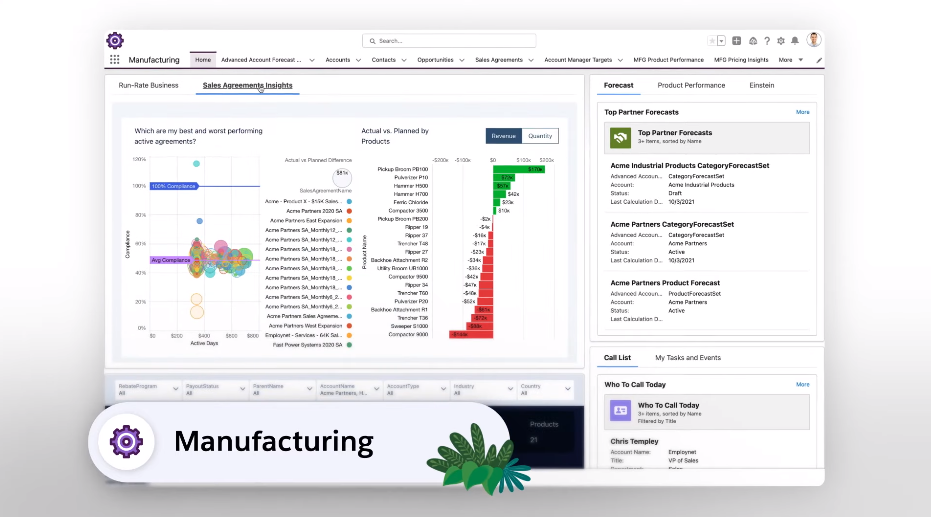 BIG DATA
BIG DATA
 BIG DATA
BIG DATA
 BIG DATA
BIG DATA
Salesforce Inc. and Databricks Inc. have debuted a new product integration that aims to simplify joint customers’ data analytics projects.
The integration was developed as part of a technical collaboration that the companies detailed today. The news comes a few days after Salesforce announced a similar partnership with Snowflake Inc., one of Databricks’ top rivals, and ahead of Salesforce’s annual Dreamforce conference in San Francisco starting Tuesday.
The new technical collaboration detailed today focuses on two products: the Databricks Lakehouse Platform and the Salesforce Data Cloud.
The Databricks Lakehouse Platform is Databricks’ flagship product. It’s a so-called data lakehouse, a software system that companies can use to store large amounts of information, analyze it for useful insights and train machine learning models. A lakehouse combines the features of two earlier product categories known as data warehouses and data lakes.
The other focus of the companies’ collaboration is the Salesforce Data Cloud. It’s a cloud-based platform that enables enterprises to store their customer information in one centralized location. That information can be used to inform sales teams’ product pitches, develop personalized ads and perform other go-to-market activities.
The integration announced today will enable users to access data stored in the Databricks Lakehouse Platform from within the Salesforce Data Cloud interface and vice versa. The companies say the integration lends itself to a variety of analytics use cases.
A retailer, for example, could combine the customer information it stores in Salesforce with data about competitors’ ad campaigns from its Databricks lakehouse. It could then correlate the two datasets to determine how changes in competitors’ marketing strategy affects customer demand.
It’s also possible to sync records the other way around, from Salesforce to the Databricks Lakehouse Platform. The latter software includes a set of tools for building artificial intelligence models. Using the new integration between the two platforms, a company could move records from Salesforce to its Databricks environment and use those records to train its AI models.
“Access to trusted, governed data is critical for every company and the ability to combine that data with AI is now essential to remain competitive,” said Adam Conway, senior vice president of products at Databricks. “Delivering best-in-class integrations with Salesforce builds on our longtime partnership and will enable more organizations to securely share reliable, high-quality data and AI models across platforms.”
Last week, Salesforce introduced a similar integration for Snowflake’s popular cloud data platform. It allows companies to combine information they store in Salesforce with data from their Snowflake environments. As with the Databricks integration, there’s no need to use third-party ETL tools to move data between the platforms.
Support our mission to keep content open and free by engaging with theCUBE community. Join theCUBE’s Alumni Trust Network, where technology leaders connect, share intelligence and create opportunities.
Founded by tech visionaries John Furrier and Dave Vellante, SiliconANGLE Media has built a dynamic ecosystem of industry-leading digital media brands that reach 15+ million elite tech professionals. Our new proprietary theCUBE AI Video Cloud is breaking ground in audience interaction, leveraging theCUBEai.com neural network to help technology companies make data-driven decisions and stay at the forefront of industry conversations.